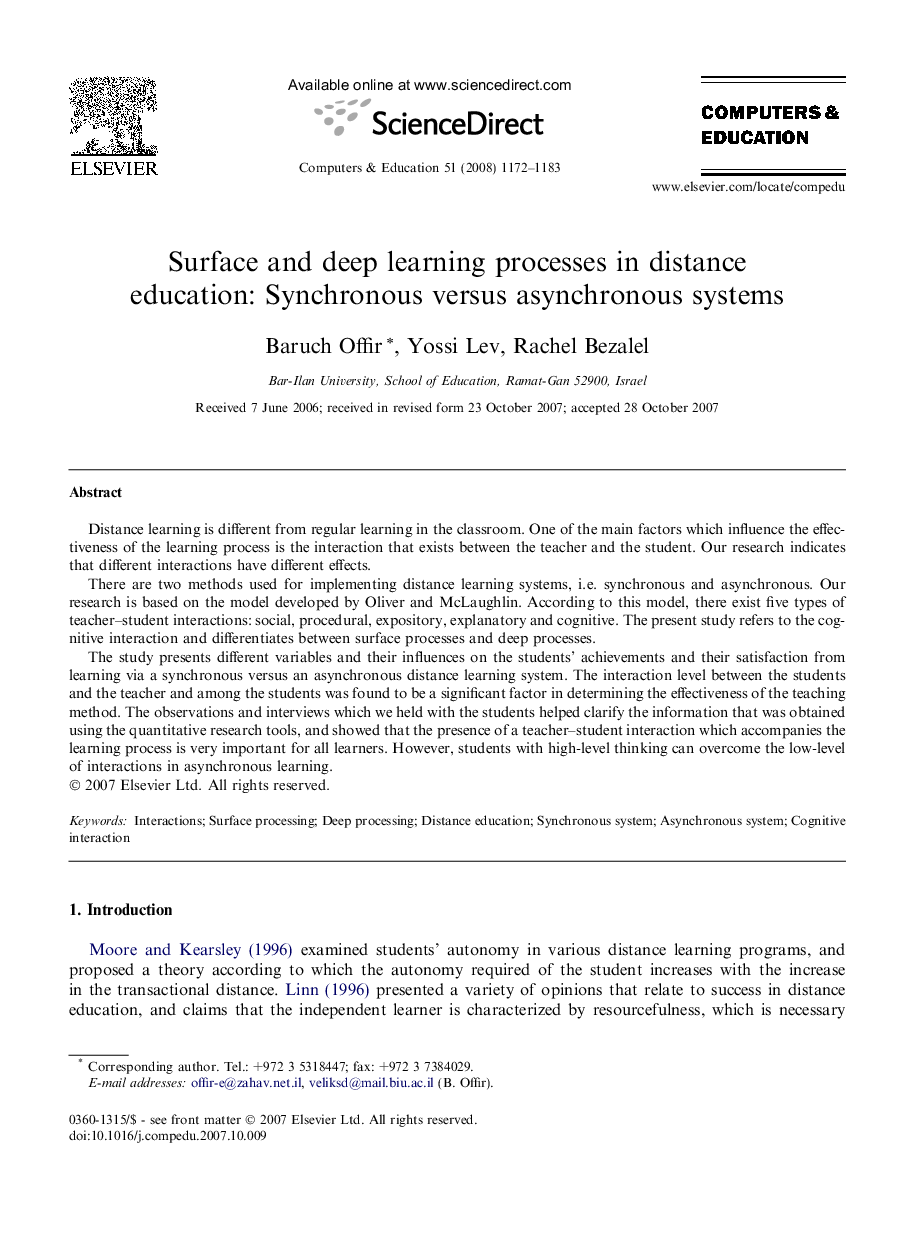| Article ID | Journal | Published Year | Pages | File Type |
|---|---|---|---|---|
| 349189 | Computers & Education | 2008 | 12 Pages |
Distance learning is different from regular learning in the classroom. One of the main factors which influence the effectiveness of the learning process is the interaction that exists between the teacher and the student. Our research indicates that different interactions have different effects.There are two methods used for implementing distance learning systems, i.e. synchronous and asynchronous. Our research is based on the model developed by Oliver and McLaughlin. According to this model, there exist five types of teacher–student interactions: social, procedural, expository, explanatory and cognitive. The present study refers to the cognitive interaction and differentiates between surface processes and deep processes.The study presents different variables and their influences on the students’ achievements and their satisfaction from learning via a synchronous versus an asynchronous distance learning system. The interaction level between the students and the teacher and among the students was found to be a significant factor in determining the effectiveness of the teaching method. The observations and interviews which we held with the students helped clarify the information that was obtained using the quantitative research tools, and showed that the presence of a teacher–student interaction which accompanies the learning process is very important for all learners. However, students with high-level thinking can overcome the low-level of interactions in asynchronous learning.
